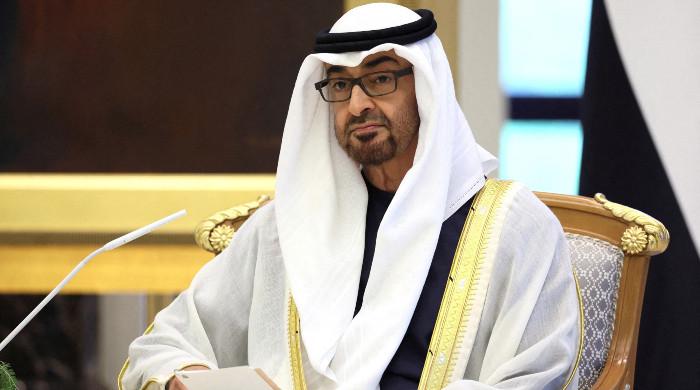Promoting innovation
By adopting innovation as a central policy lens, we can identify and foster cross-sectoral elements that enhance information accessibility
April 16, 2024

There are some common themes from the lives of Thomas Edison (1847-1931), Robert Noyce (1927-1990) and Steve Jobs (1955-2011) that can provide valuable insights to Pakistan’s policymakers designing policies on promoting innovation.
Despite humble backgrounds, they had access to robust infrastructure. The lower and middle-income areas each of these innovators grew up in had safe infrastructure and robust civic facilities that nurtured their innovative bent.
Edison quit school when he was 12 and became a railroad news boy, selling candies and popcorn during the three-hour journey from his town to the city. The train exposed him to early telegraph technology, which was an integral part of railway communications at the time. It was an area where Edison would make one of his first famous contributions, long before his other well-known inventions like the light bulb and phonograph.
Noyce’s family — due to his father’s ailing health and dropping income — was constantly on the move, renting from house to house on an almost yearly basis. He was however able to gain admission in a local government high school where he performed brilliantly, later gaining admission in a government college in the same town, and finally going on to pursue a PhD in Physics from MIT.
Jobs’ early exposure to electronics came from his adopted father, a mechanic, and from the neighbourhood dads, most of whom were engineers in the sprouting defence technology industries nearby. Fascinatingly, his inspiration for clean cut designs came from the house he lived in — an Eichler Home. Joseph Eichler was a social visionary who built inexpensive houses primarily for middle-class Americans. Jobs’ appreciation for Eichler homes instilled in him a passion for making nicely designed products for the mass market.
The three made innovative products in their 20s and 30s with little capital investment. Some of Edison’s early inventions (including a stock ticker, a fire alarm, telegraph printer and his first patent: an electrochemical vote recorder) were made in his 20s. All were put together in the attic of a shop crammed with laboratory apparatus where Edison would tinker after work.
Noyce was 32 when in 1959 he independently invented the monolithic integrated circuit. He later started Intel about 11 years into a very successful career in semiconductor technology renting a 3,000-square yard commercial office space with only 12 engineers. Jobs founded Apple Computers in the garage of his family home, now designated a listed historical site in the US. He was 22 when Apple released the ground-breaking Apple II computer in 1979.
These innovators were a part of an ecosystem of innovation. None of the three came up with their inventions in a bubble of isolated genius. For example, Edison was neither the first nor the only person trying to invent a commercially viable incandescent light bulb. Edison’s breakthrough came when he discovered that a carbonised bamboo filament could last for over 1,200 hours, making it practical for widespread use.
Intel’s breakthrough 4004 microprocessor in 1971 came at the back of a decade of growth in the chip industry in the US with competitors comprising Texas Instruments, Fairchild Semiconductor, and Advanced Micro Devices (AMD).
When Apple released its first fully assembled personal computer Apple II in 1979, they had competition from other fully assembled PCs like the Tandy TRS-80 and the Commodore PET. The Apple II, however, stood out due to features like colour graphics and audio capabilities.
The snippets from the lives of the three innovators described above provide Pakistani policymakers some guiding principles in designing policies aimed at promoting innovation.
Innovation policies should target lower/middle-class Pakistanis: The traits for innovation and entrepreneurialism — rooted in the human instincts of survival and evolution — are randomly distributed in the human population. Indeed, it is a statistical certainty that at this very instance in Pakistan, there exist individuals endowed with the same innovative bent as Edison, Noyce and Jobs.
It is also highly likely that — due to being a larger proportion of the population — our Pakistani geniuses belong to the lower- and middle-class rungs of society. But how many of our policies around innovation, technology, and industry are targeted towards them?
Instead of a lopsided focus on established businesses and industrial elite, and repeat reliance on foreign investment, far greater returns can be enjoyed from policies targeted towards our lower/middle-class. Pakistanis have benefitted from the innovations and creative talents of lower/middle-class citizens in media, arts, culture, sports, nuclear science and defence.
In avenues almost exclusively held by the elite — such as politics and big industry — the stagnation in creativity and innovation is plain for all to see.
Expand the innovation ecosystem, make it inclusive: Following from the point above, the innovation ecosystem in Pakistan needs to be expanded and made inclusive. Every transformational invention in history came about an iterative improvement on similar products that multiple inventors were competing to perfect at the same time.
For the next transformational product or business that starts out in Pakistan, we need hundreds making an attempt. We are currently nowhere near the critical mass of trial and error required to spawn innovative commercial products and businesses.
Tax incentives, interest-free loans, subsidies and other similar policy tools hitherto employed to attract foreign investment or prop up established business should instead be directed at students, universities and small businesses, especially those set up by women, minorities, immigrants and other vulnerable groups.
Coordinated multi-sectoral policy mix to create enabling infrastructure for innovation: Whereas the railway allowed a 12-year-old Edison to earn money and learn about telegraph technology, had he been in Pakistan, he might have been killed in one of the regularly occurring railway accidents in our country.
Noyce would not have had access to a good public high school and college growing up in a poor locality in Pakistan.
And due to the stark difference in quality of life between Pakistanis from different socioeconomic backgrounds, Jobs who was given up for adoption when he was born and whose adopted father was a mechanic, would not have been living in the same suburb as the engineers and the technological advancements taking place around him, nor gained design inspiration from the good quality house designed for ordinary citizens.
Policy sectors such as railway and housing — and other aspects of civil infrastructure — might at the surface level not seem linked to innovation. However, their interplay helps create an environment conducive to innovation.
Efficient rail networks enhance connectivity between regions, fostering collaboration, knowledge transfer, and innovation. People living in safe, comfortable homes are more likely to engage in creative and innovative activities. Well-designed neighbourhoods encourage social interactions, knowledge sharing, and collaboration.
Innovation policymaking should be seen as penetrating various policy domains. By adopting innovation as a central policy lens, we can identify and foster cross-sectoral elements that enhance information accessibility and promote collaboration within our society.
Through such a lens, we can immediately recognise some of the detrimental trends in the way we continue to develop as a society. For instance, consider the negative impact of gated communities which perpetuate socioeconomic segregation, and insufficient investment in public transport, which limits the mobility of people and ideas.
Think of the scale of damage restricting the internet has on innovation. It is no coincidence the most innovative economies of the world have the freest internet while Pakistan finds itself on the other end of the spectrum.
The writer is a civil engineer and manager at an engineering consultancy. He tweets/posts @znafridi and can be reached at: [email protected]
Disclaimer: The viewpoints expressed in this piece are the writer's own and don't necessarily reflect Geo.tv's editorial policy.
Originally published in The News









